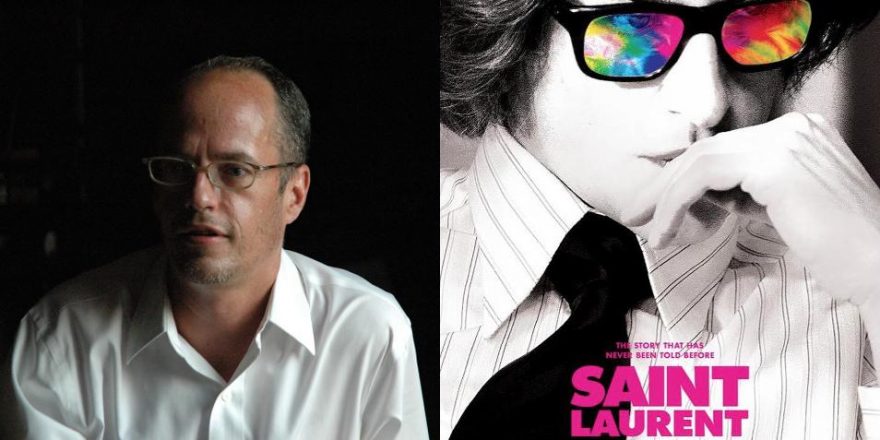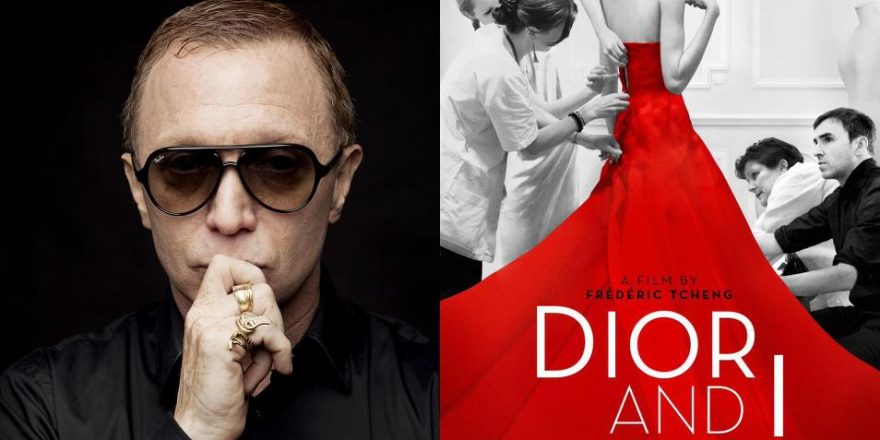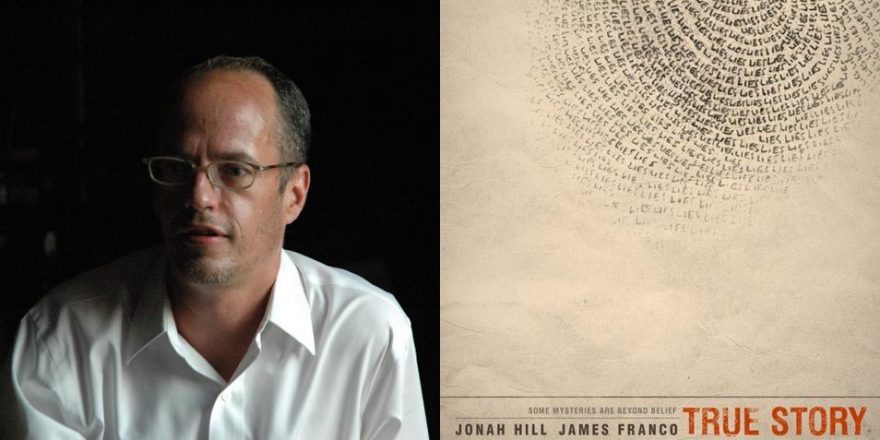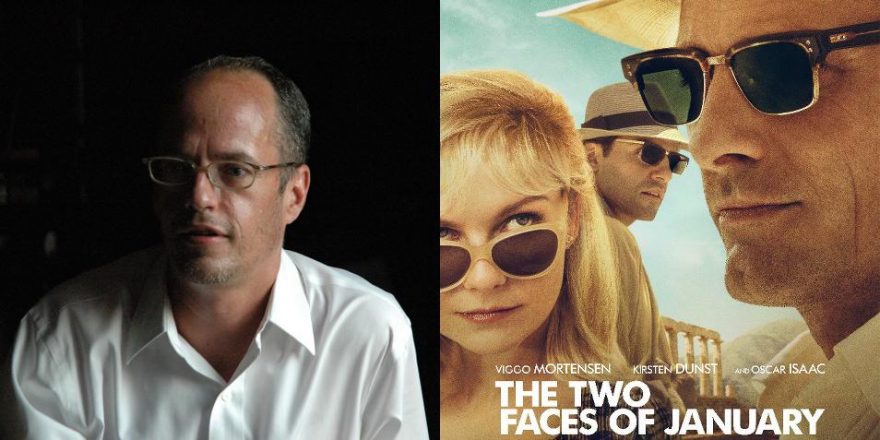BIANCA JAGGER: Pornography — does it excite you?
YVES SAINT LAURENT: (Sigh.) Pornography? I don’t know what that is. Pornography, eroticism, love, it’s all the same to me.
(Interview magazine, January 1973)
For Yves Saint Laurent’s first appearance in the pages of his magazine, Andy Warhol took a back seat to a chatty Bianca Jagger. A year later, when Warhol painted Saint Laurent’s portrait, he frequently told reporters he was “just a traveling society painter.” Thumbing his nose at the ascetic purity of minimalist and conceptual art, his ’70s work anticipates our current infatuation with the artist as brand name and the blurring of the boundaries between art and fashion, or the museum and the street. Explaining why he made all the portraits the same size, Warhol replied, “They all have to be, so they’ll all fit together and make one big painting called ‘Portrait of Society.’”
Bonello captures the druggy extravagance and sensual phantasmagoria of Saint Laurent’s world.In Saint Laurent, director Bertrand Bonello’s audacious rebuke to the conventional biopic, Bonello and his cowriter Thomas Bidegain use several letters between Warhol and Saint Laurent in voice-over to capture the tenor of those heady times. (In a movie that gets so many things right, the choice of the actor to voice Warhol is terribly wrong — completely missing Andy’s wry, affectless cadences. But I digress.) Shunning traditional chronology and employing bold supertitles revealing the year, the movie focuses on the decade between 1967 and 1976 but does so in a fractured, associative manner, time shuttling forward and then folding back in on itself again. Like memory. Or Proust.
We meet Saint Laurent (Gaspard Ulliel) near his breaking point, in crisp beats of slow disclosure. 1974. A figure we don’t quite yet glimpse purchases an airline ticket and then checks into a hotel in the name of Proust’s M. Swann. Naked, silhouetted, he gives a shaky, indiscreet press interview sitting on his hotel bed, the Eiffel Tower visible through the window.
Then we circle back to 1967, to the YSL atelier. Precise hands measure and fit a model with the tender, clinical ministrations of a surgeon. We finally see Yves clearly here and right from the start I was astonished by the eloquent precision of Ulliel’s body language and his ability to conjure Saint Laurent’s reedy, quavering yet strong speaking voice without ever imitating it directly. Though the “other YSL movie” (Yves Saint Laurent) had the approval of YSL’s cofounder and significant other, Pierre Bergé, and thus access to the couture archive, this film manages to convey the luxe, detailed surfaces of the clothing and captures the world of YSL’s fashion with the idiosyncratic and highly specific feel of an insider.
Bonello’s irreverent approach would have been impossible in an Bergé-approved version of events, and that’s just what the doctor ordered. It’s a shock to see the usually slender Jérémie Renier as Bergé, a stout bourgeois businessman. In an early scene that captures the playful erotics of their relationship, Bergé’s naked legs jut out beneath a short black and maroon smoking jacket as he locks Yves into a closet (!) in a teasing game of foreplay. The ease, humor and abandon with which Bonello captures the sensual world of this decade is remarkable, entirely lacking the cautionary-tale revisionism so common in movies about the ’70s.
The iconic cast of characters is all here, with everyone in YSL’s coterie conveyed as a distinct persona and personality. Recreating the iconic meeting of Saint Laurent and close friend and muse Betty Catroux (Aymeline Valade) in Paris’ Club Sept, Bonello captures the thrilling shiver of the dance floor as a six-foot-tall Catroux swirls, snake-hipped, into YSL’s life. Importantly, the film conveys why women so loved his clothes — for their freedom of movement and simple elegance: “pajamas to go dancing in.”
Though the film touches on a wide array of YSL’s clothing, two collections are given significant focus: the “Années quarante” or “Libération” collection from 1971 and 1976’s “Ballet Russes.” In keeping with his subjective, visceral approach, Bonello stages these sequences as stylistic set pieces. If you don’t know the fashion history, you won’t necessarily learn the details here, but you will get a powerful sense of the ways in which Saint Laurent provoked the Parisian upper crust. With its turbans and tailored jackets or brightly colored, dyed fox-fur “chubbies,” the infamous 1971 collection revisited the 1940s clothing of the Nazi occupation and shockingly recalled the ersatz glamour of vintage Paris streetwalkers. This collection in particular channeled the influence of early-’70s “It Girl” Loulou de la Falaise (Léa Seydoux, underused here) with her “rich-hippie” style woven together from pieces from the couture and the flea market.
The center of the movie is dominated by the charismatic Jacques de Bascher de Beaumarchais (a memorable Louis Garrel), the lover of Karl Lagerfeld with whom Saint Laurent has an intoxicating and ultimately destructive affair. As a teenager of the 1970s seeking some reflection of my queer impulses, I scoured art books at the local library for images to open up my world. I still recall first discovering this drawing by David Hockney and being seduced by the erotic insouciance of this languid boy/man. Like a figure from La Belle Époque come to life, de Bascher lived for pleasure, elegance and decadence.

In a series of unforgettable sequences, often staged in highly charged long takes, Bonello captures Saint Laurent’s delirious slide into drugged debauchery and sexual experimentation. (Until this movie, I’d never considered the possible use of a gynecological exam chair as a substitute for a sling — a perverse and stylish nod to the emerging S&M culture of the era.) Without a trace of traditional moralism, and using an ever more hallucinatory film language, Bonello captures the druggy extravagance and sensual phantasmagoria of Saint Laurent’s world under the spell of de Bascher.

Bonello has spoken about his desire to extend the idea, present in his previous film L’Apollonide, “of magnificent confinement falling to pieces.” And as Saint Laurent becomes more successful, his private domain turns into a richly upholstered Art Deco sarcophagus. In perhaps the boldest move of all, the movie ellipses forward to 1989, where iconic ’70s actor Helmut Berger now plays Saint Laurent near the end of his life. In a movie haunted by the ghost of Visconti, this casting choice places Bonello’s movie into the context of this earlier master while at the same time rupturing the illusionistic narrative and causing the audience to consider a reality beyond the fictional frame of the film.
In a sign of just how far the world had shifted from the early 1970s, when Warhol’s portraits were gathered together in a 2009 exhibition in Paris’ Grand Palais, Pierre Bergé refused to allow Saint Laurent’s portrait to be hung in the exhibition. Hundreds of pictures were arranged in thematic rooms and Bergé objected to the inclusion of Saint Laurent’s portrait in the “glamour” room. Bristling with the bourgeois propriety of a now fully made man, Bergé sniffed to curator Alain Cueff that “the rags mustn’t be mixed with the serviettes.” Cueff refused to budge, and so Bergé pulled the painting from the show.







